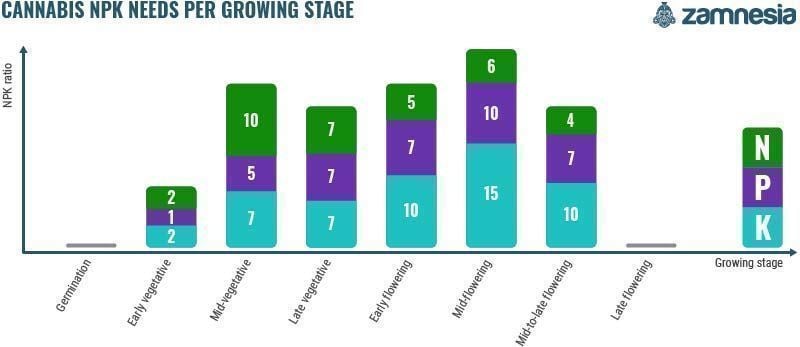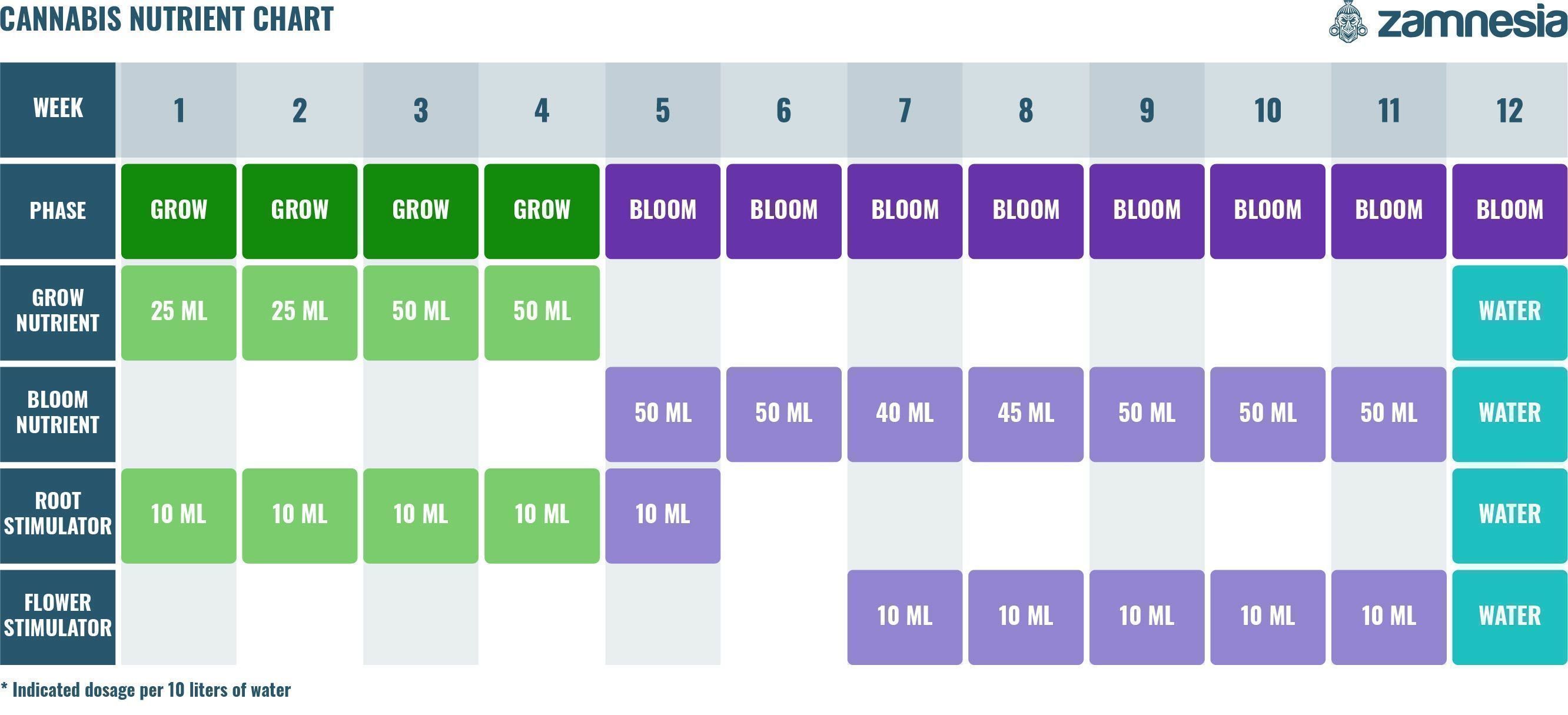How To Feed Cannabis Plants Nutrients
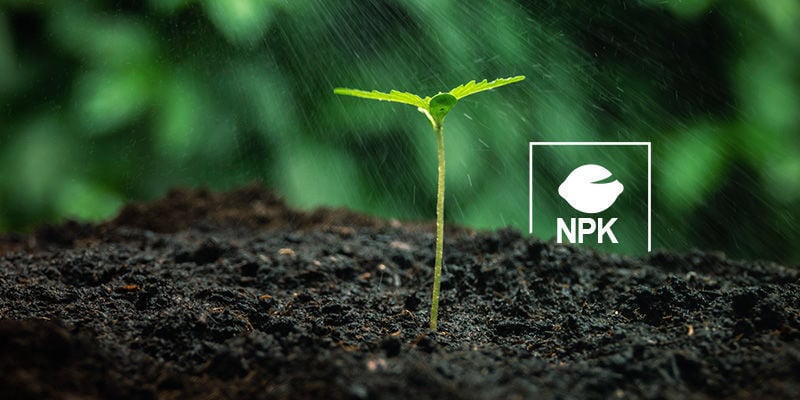
A healthy cannabis plant requires a pretty strict diet. Think of it a bit like a top-level athlete, and yourself as their nutritionist. Optimising food intake is key to getting the best results. Below, starting off easy, we'll explain all you need to know about how to feed cannabis plants properly.
We’ll review everything from why plants need nutrients, to what nutrients they need, to clarifying some key terms. Soon, you’ll feel a lot less anxious about feeding your weed!
Why do cannabis plants need nutrients?
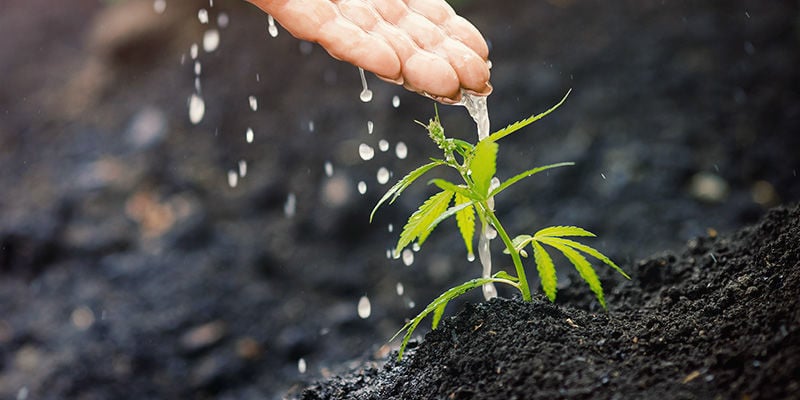
Simply put, cannabis plants need nutrients to grow and survive. As animals, we ingest nutrients chiefly through our mouths, mostly in the form of food and drink. Plants absorb them largely from the soil, via their roots. As with us, cannabis plants function at their best when given optimal ratios and concentrations of nutrients. In fact, they can be quite finicky when it comes to feeding, and getting it wrong can prove fatal for them.
Nutrients, in combination with water, light, oxygen and CO₂, provide the cannabis plant with everything it needs to grow, develop, and churn out large yields of potent and flavourful bud.
Nutrient requirements for autoflowering plants
Autoflowering plants, which contain Cannabis ruderalis genetics, tend to survive and thrive on less than their photoperiodic counterparts. In general, an autoflowering cannabis plant will require half to one-third of the amount of nutrients compared to photoperiodic plants.
What nutrients do cannabis plants need?
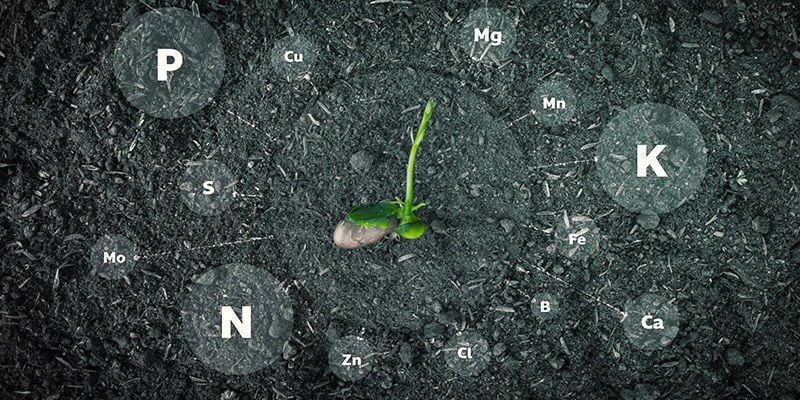
Cannabis (and most plant species) needs a whole array of nutrients in order to grow. Some of these nutrients are completely essential, and they will die without them. Others are less essential, but contribute to proper growth, fructification, reproduction, and general good health.
For example, while you may be able to survive for quite a long time on just bread, you probably won’t feel good doing so. So think of it like that: the more variety you can offer your plants, the healthier they’ll be.
Macronutrients
Macronutrients are those required by the cannabis plant in the greatest quantities, and which are most essential to their survival. Remove these from the equation, and you’ve got no hope of cultivating any kind of crop. The three macronutrients are:
The balance of the three is known as the NPK ratio. NPK is an essential term in cannabis cultivation and wider horticulture, and understanding it will allow you to feed your plants appropriately. Moreover, most commercial plant fertilisers predominantly display their NPK ratios, and it’s likely that it will be the main factor dictating which feed you decide to give to your plants.
Secondary macronutrients
But NPK alone won’t cut it. Cannabis plants need secondary macronutrients too. These are:
Each of these nutrients performs different functions during the plant’s life cycle. Specific cannabis feeds should already come with a healthy balance of these secondary macronutrients, though it’s certainly worth checking before you buy. Otherwise, you can apply them separately. For instance, calcium could be added as a foliar spray.
Micronutrients
Finally, plants also require micronutrients to thrive. They are named “micro” as they are needed in much smaller quantities compared to the above macronutrients. Nevertheless, they are no less important.
They are:
- Boron
- Chlorine
- Copper
- Iron
- Manganese
- Molybdenum
- Zinc
- Nickel
The good news is that, if growing in rich soil, micronutrients should be present in high-enough quantities already, so there’s no need to worry about them. If, however, you are growing in an inert medium hydroponically, for example, then you must add them yourself.
Other beneficial elements
The above nutrients are crucial to the proper growth and survival of cannabis plants. The following nutrients can also be beneficial, if used correctly, but if you do not include them, it won’t have any negative repercussions. Some other beneficial elements include:
- Cobalt
- Selenium
- Silicon
- Sodium
When to use which nutrients
The phase of development a cannabis plant is in will largely determine the quantity and ratio of nutrients it requires. The table below provides an overview of the different ratios required at each stage.
| Growing stage | N | P | K |
| Germination phase | 0 | 0 | 0 |
| Early vegetative phase (seedling) | 2 | 1 | 2 |
| Mid-vegetative phase | 10 | 5 | 7 |
| Late vegetative phase | 7 | 7 | 7 |
| Early flowering phase | 5 | 7 | 10 |
| Mid-flowering phase | 6 | 10 | 15 |
| Mid-to-late flowering phase | 4 | 7 | 10 |
| Late flowering phase | 0 | 0 | 0 |
As you can see, at the very beginning and end of a plant’s life, they do not require any outside nutrients. Germination can occur in water or a growing medium, but moisture is all that is necessary. In the final stages, many growers choose to flush the growing medium, meaning they wash out all remaining nutrients with pure water. It is believed that this forces the plants to use up their reserves, resulting in a better-tasting final product.
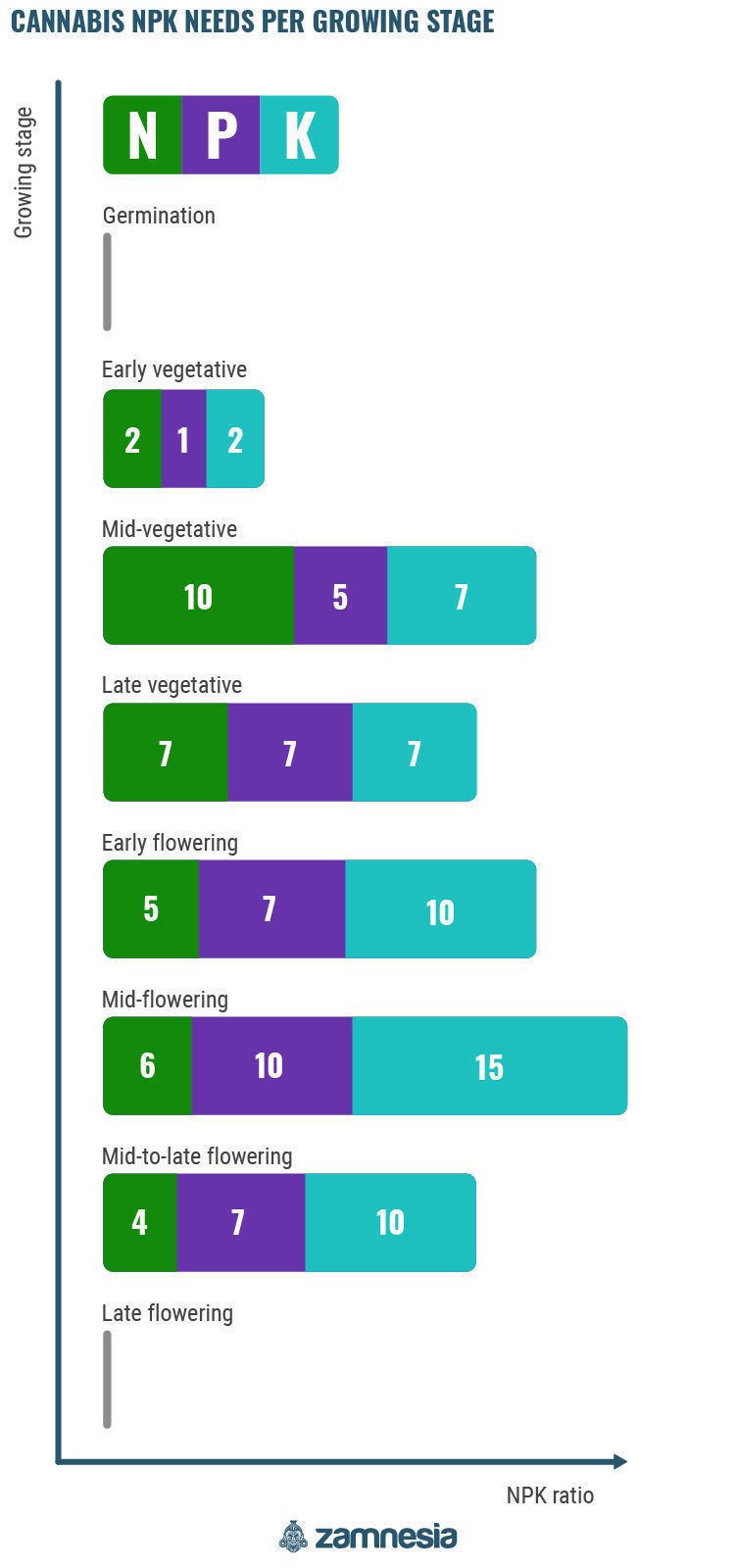
Aside from this, plants require different concentrations and ratios of NPK throughout their lives. Breaking it down into as many stages as featured in the above graph is not necessary, but it will yield the best results. For first-time growers, it can suffice to use a veg feed during the vegetative stage, and a bloom feed during the flowering stage.
If growing in soil, the nutrients required for the seedling/early veg phase should already be present, and therefore need not be added. If growing in inert media, then you will indeed have to supplement for this stage as well.
How to manage micronutrients
The simplest method for achieving the right balance of micronutrients is to grow using soil. Almost all soil types, and particularly those geared to cannabis, come with enough micronutrients to supply your plant throughout its entire life cycle, making this something you needn't worry about.
If you opt for a soilless/hydroponic setup, then you’ll have to add these yourself. In most cases, following manufacturer instructions will be enough. Unlike NPK, you don’t need to get hung up on the specifics of micronutrient ratios. However, as you’ll regularly be replacing the water in your hydro setup anyway, you may choose to tinker with micronutrient balances once you’ve got the rest down.
Environmental influences on feeding schedules
The environment in which your plants grow also maintains some influence over how they should be fed. This is more relevant to experienced growers, and shouldn’t be of too much concern for novices. For those looking to hone their skills and optimise growth, though, the following is worth taking into account:
- If plants are growing in hot conditions, 10–20% less nitrogen is recommended
- If growing in cold conditions, 10–20% more nitrogen is recommended
- If growing under intense light, use more nitrogen
- If growing in low light, use less nitrogen
How to use nutrients effectively
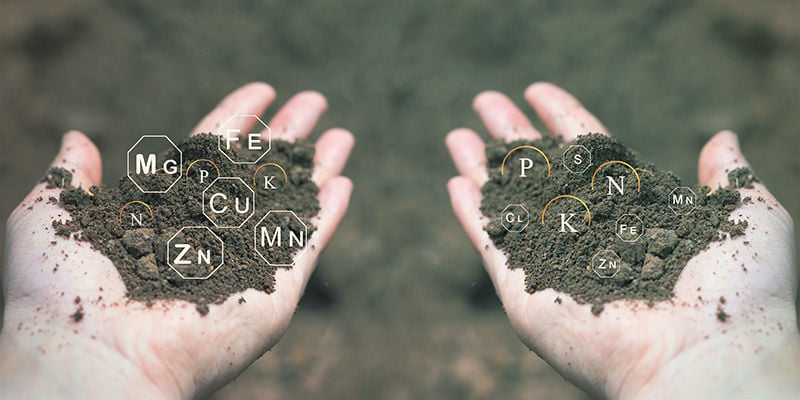
In order to get the most from your nutrients, it’s advisable to stick to one brand or one feeding plan. The reason is that, alongside macronutrients, fertilisers are likely to contain lots of other ingredients and additives. Brands create different feeds that work together, meaning they’ll take secondary macronutrient and micronutrient balances into account across different products. Therefore, sticking to one brand is likely to provide the best results. Otherwise, you can make your own feeds, or find out exactly what’s in each bottle if you want to mix brands.
Reading nutrient feeding charts
Most commercial feeds come with a feeding chart. These charts outline the ratios necessary for each stage of growth, and tell you how much feed you should add per litre of water.
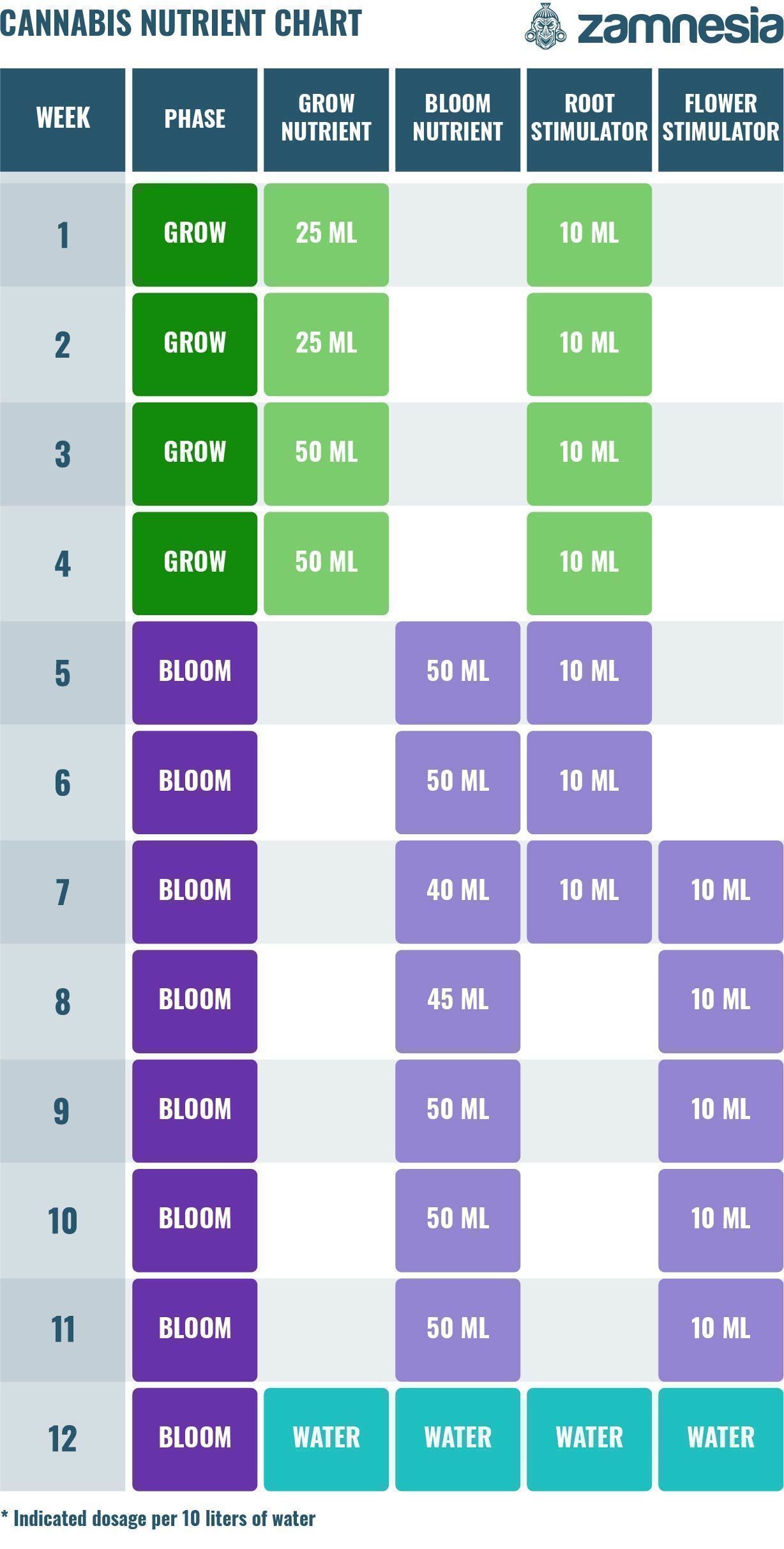
Of course, these are standardised, and thus should be used as a guide rather than a strict rule for your specific plants. They tend to assume either a 12 or 13-week life cycle, as this is about average for a photoperiodic plant. However, you may have a lengthy sativa that extends beyond this, or a speedy autoflower that comes in closer to 8 weeks. So exercise a little flexibility when using these charts.
Though this shouldn’t be expected, some charts also advise the pH and EC values optimal for each stage of growth, and for a given fertiliser.
The importance of preventing overfeeding
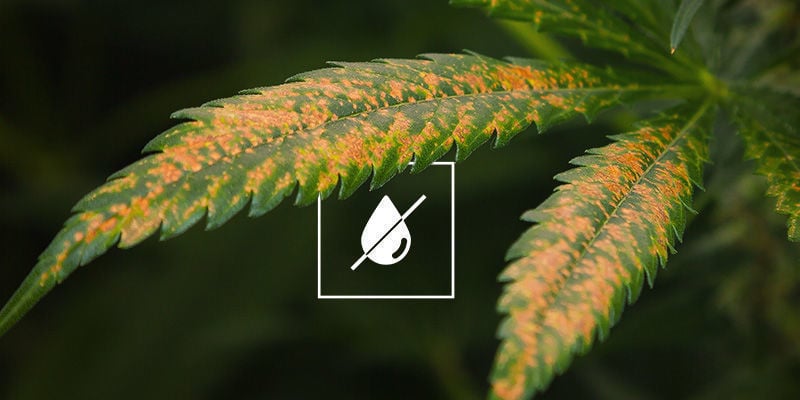
One of the most common mistakes novice growers make is overfeeding. It can be easy to assume that more food means better growth, and that plants will just leave what they can’t eat in the soil. However, overfeeding is far more dangerous than underfeeding, and is much harder to reverse too.
If you overfeed plants, they can develop what’s known as "nutrient lockout". Essentially, this is when the concentration of nutrients in the soil becomes too high and the plants are unable to properly absorb them, counterintuitively leading to malnourishment. Unlike underfeeding, though, the soil or medium will need to be totally flushed to reverse this effect, and then nutrients will need to be gradually added anew.
So it’s much easier to err on the side of caution and underfeed, rather than overfeed, your plants. If your specimens begin to show signs of underfeeding, you can simply add a little more, or administer supplementary food via a foliar spray—though this doesn’t work for immobile nutrients.
It's also wise to use an EC meter to measure the ppm of the nutrients, and a pH meter to ensure that your water and medium have the correct acidity to ensure optimal nutrient uptake. For instance, you may be feeding your plants perfectly, but if the pH is too high or too low, then the roots will not be able to absorb the nutrients properly, thus exhibiting signs of underfeeding. And if you increase their feed, then you will cause the nutrient lockout situation referenced above. Therefore, careful management of these factors maintains the equilibrium plants need to stay happy and healthy.
Slow-release vs quick-release fertilisers
If in doubt, growers can use slow-release fertilisers, which—as the name suggests—release nutrients gradually over time. These specially designed feeds mitigate the risk of overfeeding, making them perfect for beginners, hobbyists, and guerrilla growers. The only real downside is that you can’t customise the ratios to the needs of a particular strain. So for advanced growers who want total control, slow-release fertilisers might be limiting. Otherwise, they’re very useful products.
Growers could even choose to create or source organic “super soil”, which comes with everything a plant needs for its entire life cycle, meaning you only need to administer pure water and keep an eye on the pH level.
How to prepare cannabis nutrient solutions
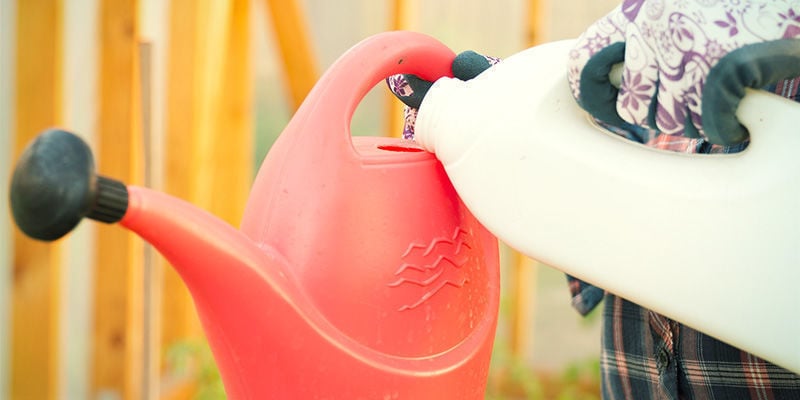
Preparing a nutrient solution is fairly easy and requires only a few simple steps. That said, it’s important to do it thoughtfully, as getting the ratios wrong can cause damage, which is a lot of effort to reverse—and indeed may not be entirely reversible. Here are the steps to preparing a nutrient solution:
-
Source your water. Obviously, filtered water or RO (reverse osmosis) water is preferable to the tap.
-
Add the nutrients as instructed on the product packaging. Use an EC or ppm meter to get measurements exact.
-
Depending on your water, adjust the pH of your solution using a pH up/down supplement.
-
Now you’re ready to feed your plant. Add the solution, and once some of the water starts to run out of the bottom, measure this runoff for its pH and ppm to ascertain what’s going on in the soil. If it’s all good, you’re done! Otherwise, you might want to adjust it a little.
What about pH, ppm, EC, and water temperature?
We've mentioned all of the following terms throughout the text, but let's clarify their importance when it comes to feeding your plants:
-
pH: This stands for “potential of hydrogen”, and tells you how acidic or alkaline a substance is. A pH of 7.0 is neutral, which is the pH of pure water. 1 is highly acidic and 14 is highly alkaline. Usually, cannabis grown in soil likes a pH of between 6.0 and 6.5, so you must ensure your feed is within this window.
-
ppm: This stands for “parts per million”. It tells you the concentration of different nutrients within a given solution.
-
EC: This stands for “electroconductivity”. An EC reading can be converted to tell you the ppm of a solution by measuring the way electricity is conducted throughout a solution.
-
Water temperature: This one is a bit more simple. Roots have optimal temperatures at which they are able to absorb nutrients. For cannabis, this is about 19–21°C. Though dialling this in can be helpful, it’s not essential. Nature doesn’t sit at a steady temperature, and plants can function effectively across a greater range of temperatures than a grow room should exhibit.
By gaining a mastery over these factors, it will help you to be highly accurate in your feeding regimen, and therefore bring out the best in your plants.
Recognising nutrient problems
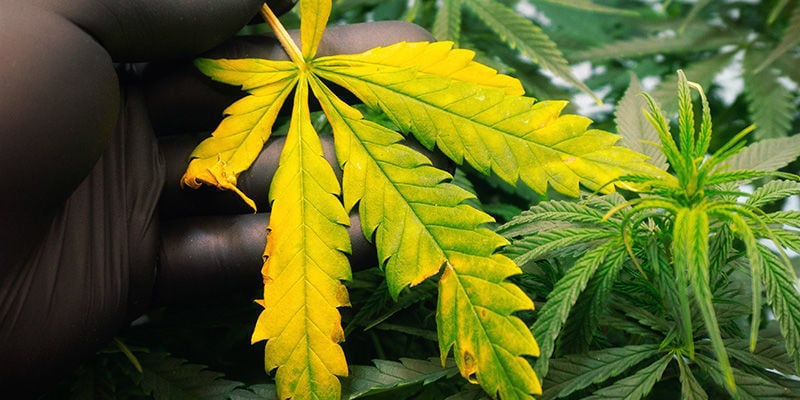
As mentioned, too much or too little of a certain nutrient can cause problems. Here’s a breakdown of some issues you could run into.
-
Nitrogen deficiency: Entire leaves will begin to yellow, starting with the oldest leaves and progressing to the newer ones.
-
Phosphorous deficiency: Older leaves will become brown or purple, with tips dying.
-
Potassium deficiency: The edges of older leaves will turn bright yellow and then begin to look scorched. Brown speckles may cover the leaves.
-
Nutrient burn (overfeeding): Nutrient burn is caused by overfeeding, and produces a yellow or tan, “burnt” appearance on the tips of fan leaves. This state can also lead to nutrient lockout.
-
Nutrient lockout: Another result of overfeeding, or improper pH level, nutrient lockout occurs when plants cannot uptake nutrients present in the soil, leading to signs of underfeeding.
Feeding cannabis: a complex endeavour
If you thought that feeding your weed plants would simply be a matter of adding a dose of fertiliser here and there, you’re probably in for a bit of a shock. Cannabis requires specific and fairly strict feeding regimens, particularly if you want large, high-quality yields.
But for novice growers, be aware that it need not be as complex as it might seem. So long as you give your plants some food, and don’t overfeed them, they will develop. Over multiple crops, you’ll get better and better at feeding your plants, until you know all of this by heart.










 United States
United States

